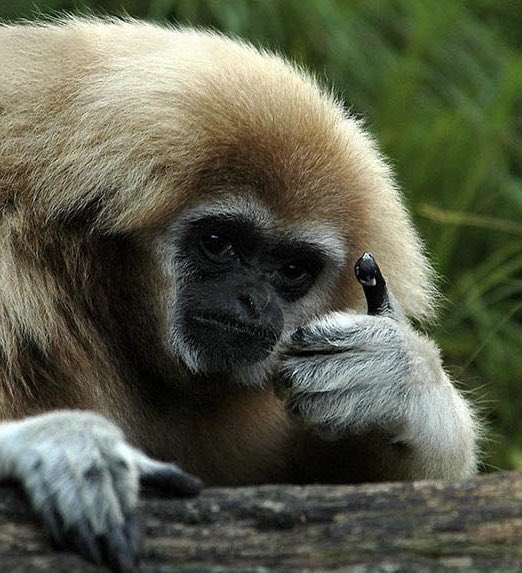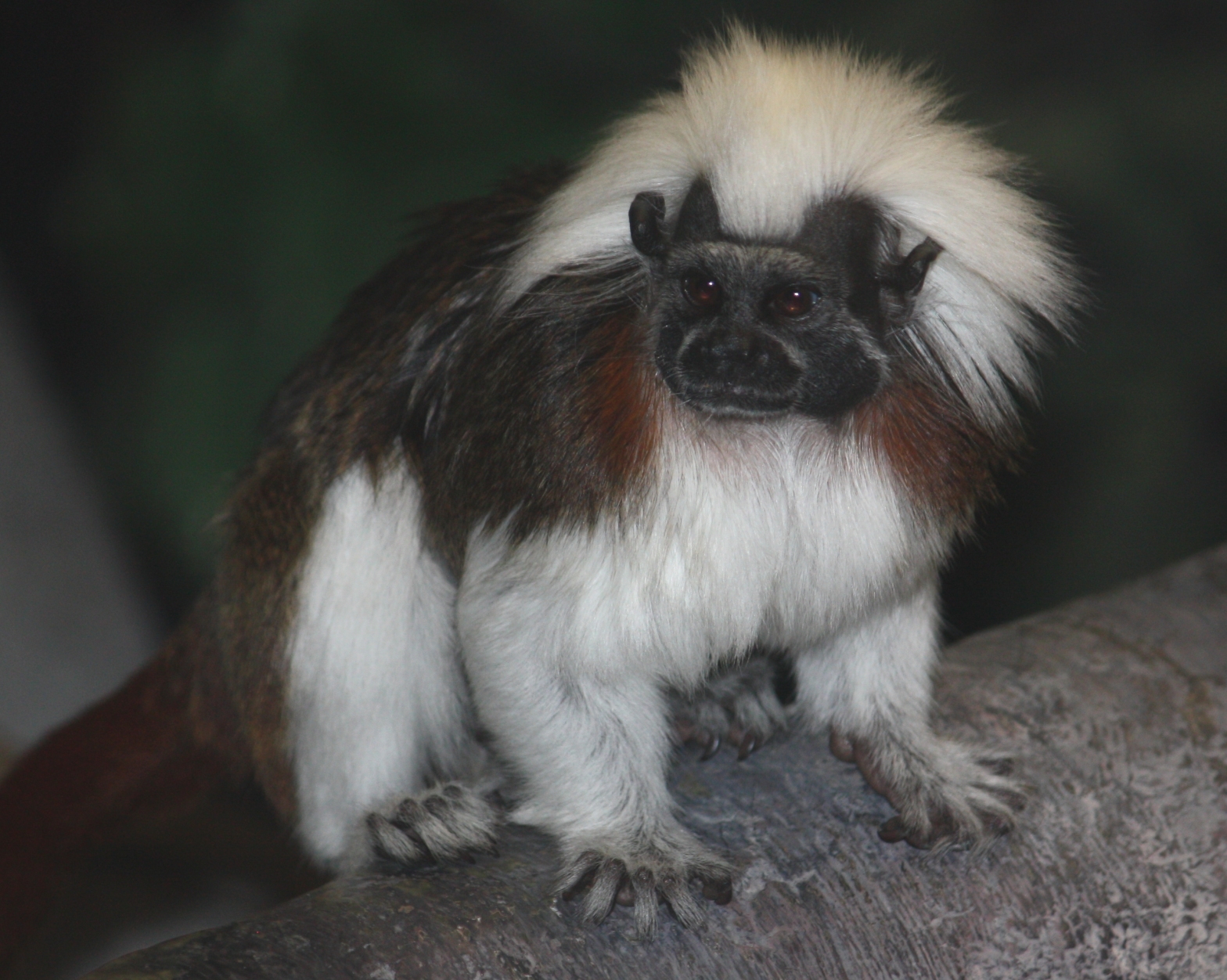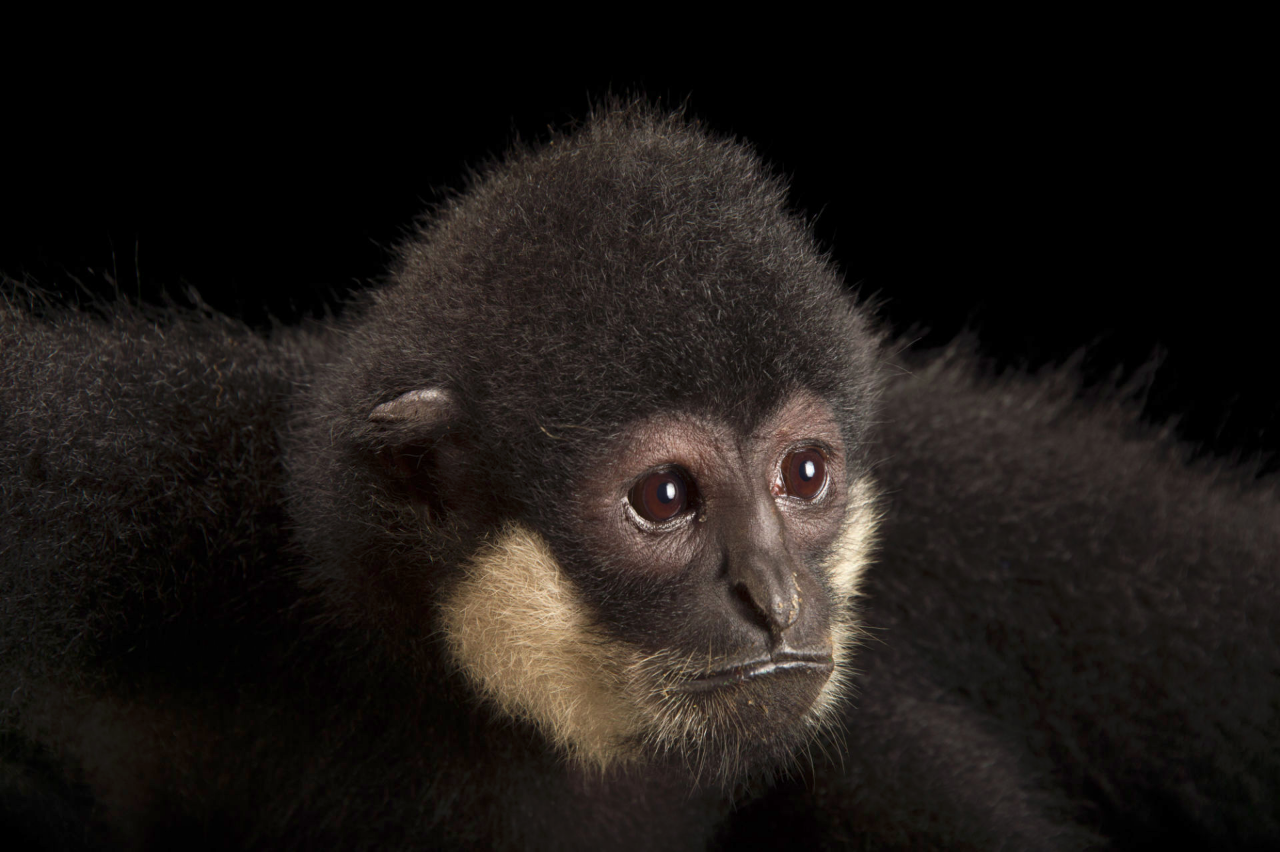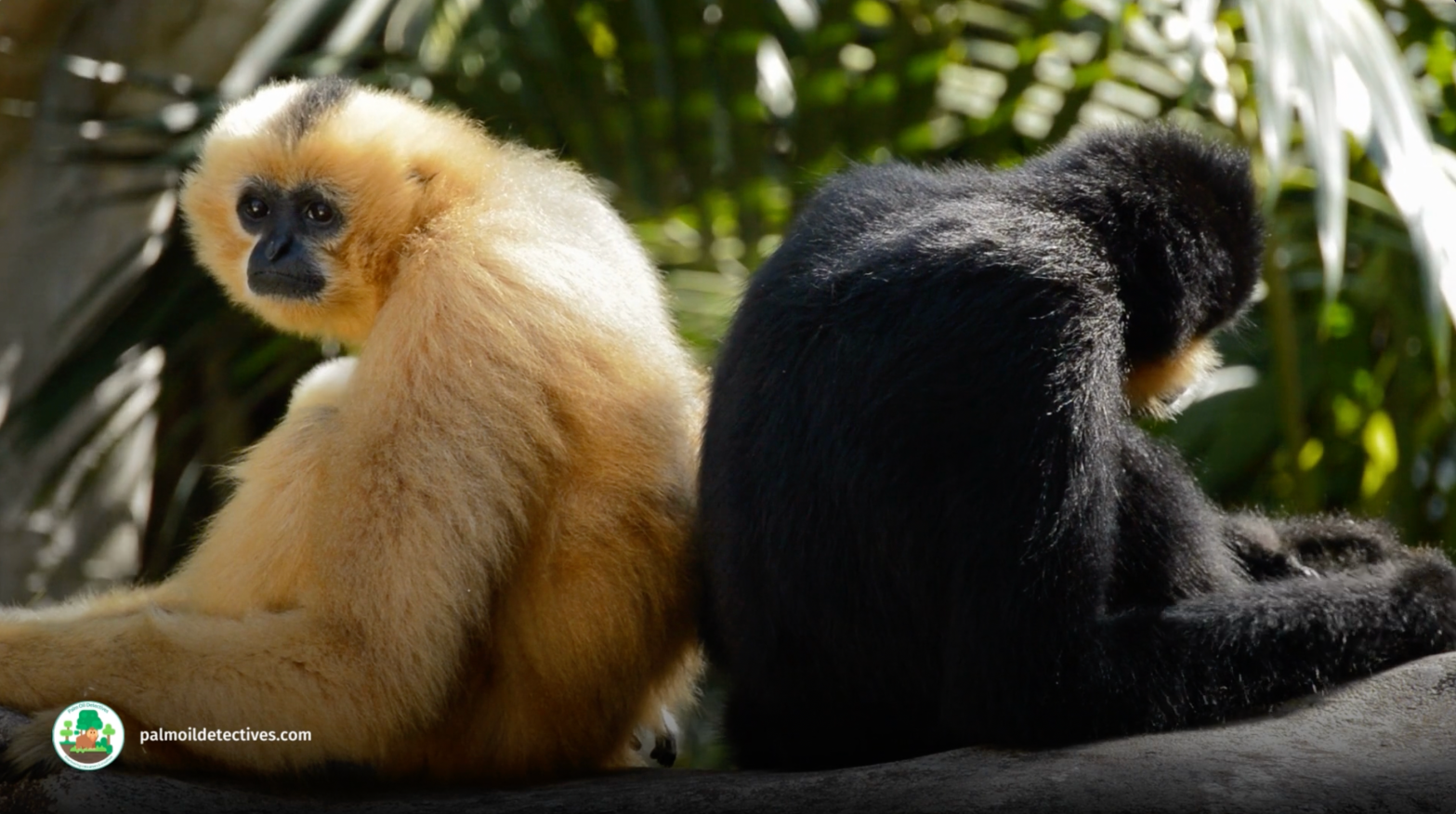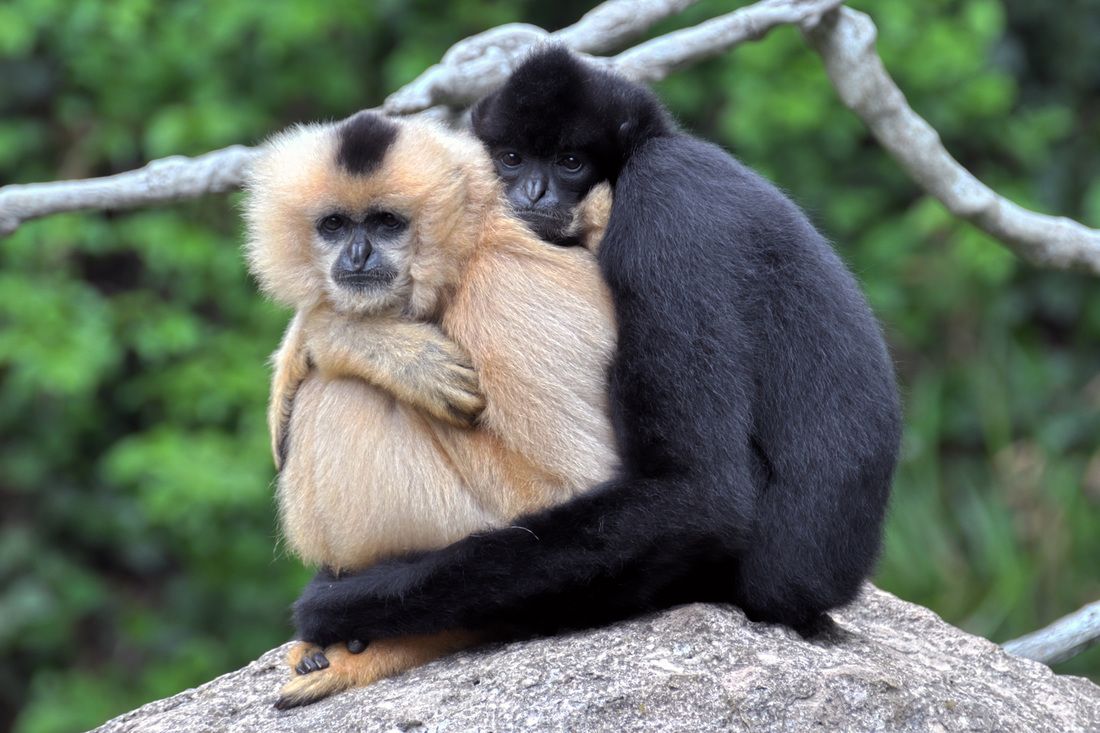Kloss’s Gibbon Hylobates klossii Endangered Mentawai Islands, Indonesia The Kloss’s Gibbon belongs to the genus Hylobates. The word Hylobates means ‘Forest Walker’ in Greek. The gibbons in this genus are known for the white circle of fur around their faces. They are known to communicate in species-specific song when defining territory or attracting mates. TheyContinue reading “Kloss’s Gibbon Hylobates klossii”
Tag Archives: Primate
Bornean White-bearded Gibbon Hylobates albibarbis
Bornean White-bearded Gibbon Hylobates albibarbis Endangered Indonesia (Kalimantan) The Bornean White-bearded Gibbon belongs to the genus Hylobates. The word Hylobates means ‘Forest Walker’ in Greek. The gibbons in this genus are known for the white circle of fur around their faces. They are known to communicate in species-specific song when defining territory or attracting mates.Continue reading “Bornean White-bearded Gibbon Hylobates albibarbis”
Bornean Gibbon Hylobates muelleri
Bornean Gibbon Hylobates muelleri Endangered Borneo The Bornean Gibbon, also known as the Gray Gibbon or the Mueller’s Gibbon belongs to the genus Hylobates. The word Hylobates means ‘Forest Walker’ in Greek. The gibbons in this genus are known for the white circle of fur around their faces. They are known to communicate in species-specificContinue reading “Bornean Gibbon Hylobates muelleri”
Silvery Gibbon Hylobates moloch
Silvery Gibbon Hylobates moloch Endangered Java, Indonesia The Silvery Gibbon belongs to the genus Hylobates. The word Hylobates means ‘Forest Walker’ in Greek. The gibbons in this genus are known for the white circle of fur around their faces. They are known to communicate in species-specific song when defining territory or attracting mates. They singContinue reading “Silvery Gibbon Hylobates moloch”
Abbott’s Gray Gibbon Hylobates abbotti
Abbott’s Gray Gibbon Hylobates abbotti Endangered Indonesia (Kalimantan); Malaysia (Sarawak) The Abbott’s Gray Gibbon belongs to the genus Hylobates. The word Hylobates means ‘Forest Walker’ in Greek. The gibbons in this genus are known for the white circle of fur around their faces. They are known to communicate in species-specific song when defining territory orContinue reading “Abbott’s Gray Gibbon Hylobates abbotti”
Northern Gray Gibbon Hylobates funereus
Northern Gray Gibbons form close familial bonds and monogamous pairs they are #endangered in #Brunei #Indonesia and #Malaysia due to #deforestation illegal hunting and the #pettrade. Support their survival #Boycott4Wildlife
Tonkin Black Crested Gibbon Nomascus concolor ssp. concolor
Tonkin Black Crested Gibbon Nomascus concolor ssp. concolor Critically Endangered Location: China, Vietnam The Tonkin Black Crested Gibbon lives in subtropical and montane evergreen, semi-evergreen and deciduous forest (Jiang et al. 2006, Fan et al. 2009a) and in China it is restricted to broad-leaved evergreen forests (Fan et al. 2009a). The species is listed asContinue reading “Tonkin Black Crested Gibbon Nomascus concolor ssp. concolor”
Lar Gibbon Hylobates lar
Lar Gibbon Hylobates lar Endangered Malaysia, Cambodia, Thailand, Laos, Vietnam, Bangladesh The Lar Gibbon is found in evergreen, semi-evergreen, and mixed evergreen-deciduous forest (sometimes known as “dry evergreen” forest, in the northern parts of their range), and is known to utilize regenerating secondary forest and selectively logged forest (Johns 1985). In northwestern Thailand, white-handed gibbonsContinue reading “Lar Gibbon Hylobates lar”
Wild Water Buffalo Bubalus arnee
Wild Water Buffalo Bubalus arnee Endangered India, Nepal, all South East Asia The Wild Water Buffalo is very dependent on the availability of water and historically their preferred habitats were low-lying alluvial grasslands including bheels (ox-bow lakes and similar pools left by changing river courses) and their surrounds; river banks, and chaporis (small sandy islandsContinue reading “Wild Water Buffalo Bubalus arnee”
Siamang Symphalangus syndactylus
Siamang Symphalangus syndactylus Endangered Indonesia, Thailand, Sumatra The Siamang lives in primary and secondary semi-deciduous and tropical evergreen forest. All levels of the canopy are used, although emergent trees are required for resting and sleeping. #Siamangs are known for their booming boisterous calls and close knit families. They are endangered from complex threats including #palmoilContinue reading “Siamang Symphalangus syndactylus”
Pig-tailed Snub-nosed Langur Simias concolor
Pig-tailed Snub-nosed Langur Simias concolor Critically Endangered Location: Indonesia Pig-tailed Snub-nosed Langurs are found in swamp forests and lowland rainforests of Sumatra, Indonesia (Tenaza 1987, Quinten 2010), as well as in primary forests on the hillsides of the islands‘ interior regions (Tilson 1977); they have also been spotted in habitat mosaics of primary and secondaryContinue reading “Pig-tailed Snub-nosed Langur Simias concolor”
Cotton-headed Tamarin Saguinus oedipus
Cotton-headed Tamarin Saguinus oedipus Critically Endangered Location: Colombia Also known as the Cotton Top Tamarin, the Cotton-headed Tamarin lives in the humid forests in the south to dry deciduous forest in the north of Colombia. Although they are recorded from primary and secondary forests. The habitat of the Cotton-top Tamarin Saguinus oedipus is used forContinue reading “Cotton-headed Tamarin Saguinus oedipus”
Red-cheeked Gibbon Nomascus gabriellae
Red-cheeked Gibbon Nomascus gabriellae Endangered Location: Cambodia, Laos, Vietnam Like other gibbons, Red-cheeked Gibbons are arboreal and diurnal, with singing bouts averaging 12 minutes and lower calling frequencies in the wet season (Rawson 2004, Kenyon 2007). The species displays a monogamous social structure of adult pair and offspring. Average group size is estimated at 3-5Continue reading “Red-cheeked Gibbon Nomascus gabriellae”
Southern White-cheeked Gibbon Nomascus siki
Listed as Endangered based on a suspected population reduction of at least 50% over the past 45 years (three generations), primarily due to logging, agricultural encroachment, and hunting, and a suspected continuing decline over at least 15 years (one generation) into the future. In Cambodia’s Virachey National Park, large areas have been cleared for rubber plantations in recent years, particularly on its eastern side, and the area is also subjected to illegal logging for luxury timbe
Northern Yellow-cheeked Crested Gibbon Nomascus annamensis
Northern Yellow-cheeked Crested Gibbon Nomascus annamensis Endangered Location: Cambodia, Laos, Vietnam The Northern Yellow-cheeked Crested Gibbon lives in broadleaf evergreen and semi-evergreen forests, at elevations of between 100-1,200 m asl. These gibbons are frugivorous but also consumes significant proportions of leaves, young shoots and flowers. They are also known to feed on Finlayson’s Squirrel (singleContinue reading “Northern Yellow-cheeked Crested Gibbon Nomascus annamensis”
Northern White-cheeked Gibbon Nomascus leucogenys
Northern White-cheeked Gibbon Nomascus leucogenys Critically Endangered Location: N.W. Vietnam, N.W Laos The Northern White-cheeked Gibbon is considered Critically Endangered based upon the combined effects of habitat loss, hunting and live capture for the pet trade. The last population in China apparently disappeared several years prior to this species’ last assessment. In Laos and Vietnam,Continue reading “Northern White-cheeked Gibbon Nomascus leucogenys”
Cao-vit Gibbon Nomascus nasutus
Cao-vit Gibbon Nomascus nasutus Critically Endangered Location: China, Vietnam The Cao Vit Gibbon belongs to genus Nomascus and are found in Vietnam and southern China. They are known to communicate in species-specific song when defining territory or attracting mates. They sing in regional accents to each other and form breeding pairs. The Cao Vit GibbonContinue reading “Cao-vit Gibbon Nomascus nasutus”
Black Crested Gibbon Nomascus concolor
The Black Crested Gibbon, found in Vietnam, Laos, and southern China, communicates using distinctive songs for territory marking and mate attraction, even showcasing regional accents. These gibbons form breeding pairs and primarily inhabit subtropical evergreen forests. However, they face severe threats from local forest destruction, hunting, logging, and agriculture expansion. Preserve their melodious habitats and use your wallet as a weapon: be #vegan #Boycottpalmoil #Boycott4Wildlife.
Hainan Gibbon Nomascus hainanus
Hainan Gibbon Nomascus hainanus Critically Endangered Location: China. These small apes belong to genus Nomascus which are found in Vietnam, Laos, Cambodia and southern China. The Hainan Gibbon is known to live in a restricted area of less than 100 km2 in southern China. They are known to communicate in species-specific song when defining territoryContinue reading “Hainan Gibbon Nomascus hainanus”
Sulawesi Crested Black Macaque Macaca nigra
Sulawesi Crested Black Macaque Macaca nigra Endangered Location: Sulawesi, Indonesia. Also known as the Celebes Crested Macaque, the Sulawesi Crested Black Macaque Macaca nigra are Critically Endangered and face high risk of extinction; populations have declined by over 80% in under 40 years due to ubiquitous threats of habitat loss and fragmentation, but also fromContinue reading “Sulawesi Crested Black Macaque Macaca nigra”








